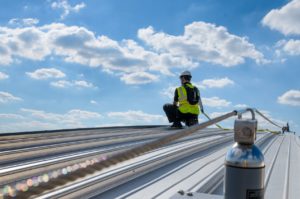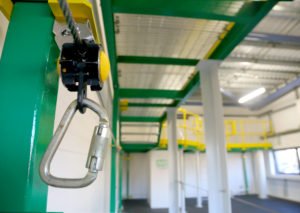Working at height
Working at height: Top tips to consider
Falls from height accounted for 35 workplace fatalities during 2017/18, according to recent statistics released by the HSE. Matthew Bailey, Divisional Manager, Inspection and Certification, at HCL Safety, says that the potential risks can be reduced with thorough preparation and close attention to detail. Here, he offers some top tips and explains why professional inspection and certification can contribute to safer working.
 Pay attention to legislation
Pay attention to legislation
A deep understanding of all relevant legislation is required, which will not only help to mitigate potential risks but help ensure that those responsible are acting in accordance with HSE guidance.
Always carry out a comprehensive pre-use inspection
Checking whether all relevant certification is in place is essential. Annual inspections and formal checks should also be carried out by third party suppliers on a regular basis. Typically, this is annually, but it depends on the application and frequency of use.
Mitigate the risks
Follow the hierarchy of control for working at height which means, if at all possible, eliminate the risk entirely. If it’s unavoidable, then select collective measures to help prevent falls. If this isn’t possible, then minimise the distance and consequences of a fall by working in fall restraint. Working in fall arrest should be a last resort.
Select the right equipment for the right job…
For work to be carried out safely and efficiently, the absolute right equipment for the job must be in place. All equipment must also be compatible with each other, such as PPE and engineered systems. It is vital to recognise that a ‘one-size-fits-all’ approach will often not improve employee wellbeing or safety.
… And make sure it’s high quality
All equipment used should be designed and manufactured in compliance with essential health and safety requirements. Achieve peace of mind that this is the case by partnering with a quality, reputable manufacturer and choose equipment based on the job at hand: Can it be done from ground level? What space is available? What are the risks? Asking pertinent questions will help when selecting equipment and ultimately, help mitigate risks.

Have a rescue plan in place
Importantly, when working within fall arrest, together with all relevant PPE, a rescue plan, in accordance with section seven of the Working at Height Regulations 2005, must be in place. Assistance in the development and implementation of a comprehensive rescue plan is a typical by-product of top-quality training.
Do nothing without training
Employers have a responsibility under the Health and Safety at Work Act 1974 to provide suitable information, instruction and training for their employees. Training provides the confidence, knowledge and skills required to carry out their work safely and efficiently.
Got your PPE?
PPE plays a vital role in mitigating the potential risks associated with working at height. The PPE chosen should be appropriate for the job at hand, safe and comfortable. A more comfortable worker typically makes for a more productive worker.
Working at height: Top tips to consider
The potential risks of working at height can be reduced with thorough preparation and close attention to detail.
Safety & Health Practitioner
SHP - Health and Safety News, Legislation, PPE, CPD and Resources
Related Topics
Future-proofing safety: Five trends shaping the PPE landscape of tomorrow
Horticulture company fined after lorry driver suffers life changing injuries
Director jailed for failing to protect workers from asbestos exposure

 Pay attention to legislation
Pay attention to legislation